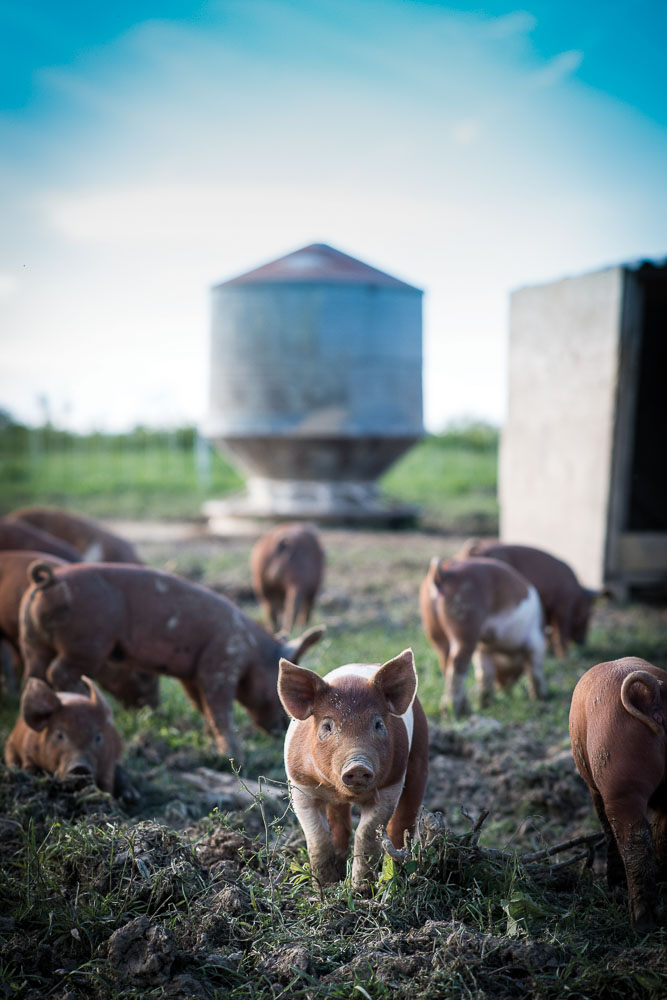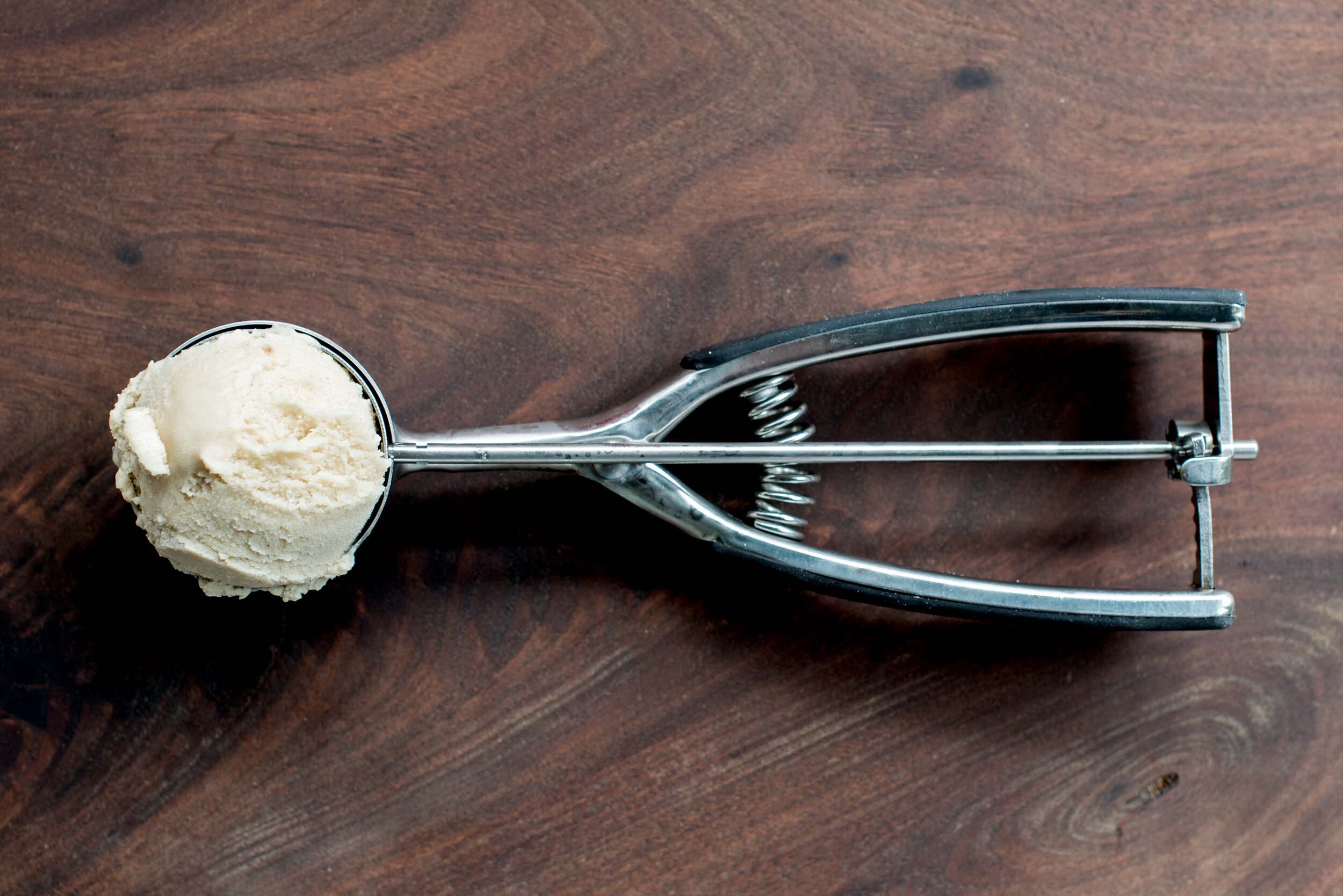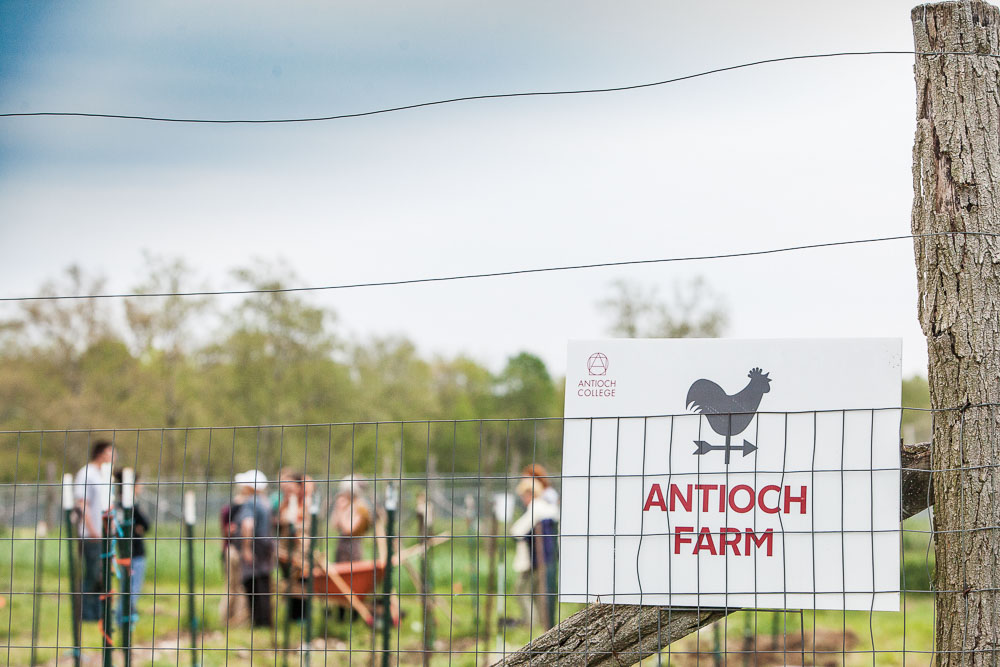A Fine Swine

Thanks to dedicated chefs and enterprising small farmers, Cincinnati is rediscovering its porcine past.
photography by Julie Kramer
“Berta,” Marc Luff calls. “Berta, come over here.”
On a sunny spring day, Berta is lying in the hay in her stall behind the hoop houses at Finn Meadows, the Luffs’ farm in Montgomery. Berta is very pregnant, her teats already swelling with milk, and takes her time walking over to us. As Luff scratches her back with a stick over the fence, she grunts softly with pleasure.
Red, another sow in the pen where we are standing, comes over to nose my backpack. She decides, after a thorough investigation, that it is not worth eating.
Red is a Duroc, while Berta is a Berkshire. Berkshires are notorious diggers, and Berta has reshaped her enclosure into a series of enormous mounds. Red’s pen, where we are standing, is mostly flat. Berkshires are also known for their large litters (and poor mothering: they tend to crush a few of the piglets) and their usefulness in soil and compost turning. Durocs are excellent mothers, and produce unusually good pork, with—to use the language of chefs—good intermuscular fat at a young age.
Red settles down next to us. Having never been around pigs before, I am surprised at how clean she is, and how pleasant the smell from the pens is. “They’re nice animals,” Luff says. He leans against Red, who doesn’t seem to mind as long as the scratches continue, and explains the difficulties of making the business work.
In 1821, in Cottage Economy, William Cobbett wrote that “without hogs”—and the meat and dung they provided in a small space—“farming could not go on.” They were, Cobbett thought, “the great stay of the whole concern.”
Today, Luff explains, the challenge for the small farmer is not managing without pigs, but figuring out how to afford to raise them at all. Heritage swine breeds, raised on grass and woodlots as well as feed, take longer to gain weight than those kept in confinement; and—until recently—they were seen as prohibitively expensive for most consumers and restaurants. For pigs to be raised this way, though, in the sunshine and the open air, with a chance to dig and the occasional scratch on the back, Luff says, you simply have to pay farmers more.
Increasingly, consumers and chefs—concerned about what the modern pork industry has become and eager for healthy, flavorful animals—are willing to do this. Chefs and households are relearning the forgotten arts of butchery and curing, and a small but growing band of farmers is working to keep alive the ancient bloodlines of swine, each with its own virtues, temperament, and history.
A Monster Piggery
Pigs were domesticated about 9,000 years ago from the Eurasian wild boar, and quickly became an indispensable part of settled human communities in Asia, Europe, and Africa. The Spanish conquistadors brought them to America, where distinct breeds formed in response to New World conditions—the Arkansas Razorback, to name a famous one, along with varieties like the Mississippi Mulefoot and the Ossabaw. The latter two breeds lived for centuries on islands and developed unique characters: The Ossabaw can tolerate saltwater, and the Mulefoot has a solid, instead of a cloven, hoof. Both are extraordinarily hardy, with almost-wild genetics.
At the beginning of the 19th century, America had dozens of such distinct breeds, and Cincinnati, with its surrounding farmland and river transport, became the center of the country’s pork industry. In 1810, Richard Fosdick discovered a rocksalt process for curing pork that enabled it to be preserved and shipped. Soon, huge quantities of preserved pork, lard, ham, and bacon began to move out of Cincinnati to every corner of the world. As a visitor wrote in 1867, Cincinnati had “originated and perfected the system which packs fifteen bushels of corn into a pig, and packs that pig into a barrel, and sends him over the mountains and over the ocean to feed mankind.”
Other visitors were less impressed. A horrified British woman named Mrs. Houstoun described Cincinnati in the 1840s as “literally speaking, a city of pigs … a monster piggery … Alive and dead, whole and divided into portions, their outsides and their insides, their grunts and their squeals, meet you at every moment.” The byproducts of Porkopolis supplied the soap and candle industry, including one budding enterprise that would eventually become Procter & Gamble.
Things began to change in the 1850s. Steamboats gave way to the railroad, and cities with better train connections—Chicago, mainly—began to replace Cincinnati as the country’s meatpacking centers. At its peak, though, Cincinnati was a pioneer in what might be called the industrial meat model. Slaughtering and packing operations were centralized, and assembly line methods were invented for dismantling animals. Certain facilities could kill and clean three hogs a minute, then slide them down chutes to be rapidly packed and sent around the world.
From Cottage to Cafo
Although the pigs were processed factory-style, they were, for the most part, still raised on small surrounding farms. This began to change in the 1920s, when it was discovered that adding Vitamins A and D to feed rations allowed animals to be kept indoors year round. Inside, with less movement, swine could devote more energy to turning feed into flesh. Confinement and crowding, however, led to higher rates of disease and mortality. In the 1950s, this was countered with regular doses of antibiotics, which, it turned out, also promoted weight gain.
Further innovations include farrowing crates that enabled large litters to survive (they also virtually prevented the sows from moving) and slatted floors that allowed the enormous quantities of manure generated to fall into lagoons.
By the 1980s, the modern swine-confinement animal feeding operation, or CAFO, had been born. These facilities, according to the USDA, have at least 2,500 swine over 55 pounds, or 10,000 swine under that weight. Today, 97% of the pigs raised in America are on CAFOs—and 55% of animals worldwide—as the immensely profitable model is spreading around the world. Almost all of the pork in an ordinary grocery store will come from such a facility.
The animal factory, to quote Wendell Berry, “like the concentration camp, is a vision of Hell.” Along with the environmental costs and the almost unfathomable cruelty of this system, CAFOs have led to a dangerous narrowing of swine genetics. The industry depends on a complex system of hybrids, but the standard industry pig is mostly Yorkshire and Hampshire, with some Duroc genetics thrown in. Known as “blue butts,” these industry hybrids have much less fat than heritage breeds, and hit 250 pounds in about five to six months, with meat that Kelly Klober, author of Raising Pigs, describes as “pale, soft, and watery.” The loss of fat also makes the pigs so susceptible to cold that they must be almost continually kept in temperature-controlled environments.
As recently as the 1930s, there were 15 breeds of pigs widely raised in the U.S. Six went extinct in the 20th century, including the Ohio Improved Chester and the Sapphire. As the CAFO model has spread, the large have been swallowed by the even larger—Smithfield, for example, which in 2007 was larger than the next five American pork producers combined, was recently bought by the Chinese Shuanghui Group.
Meanwhile, in the shadow of these lumbering giants, the little cottage with its hogs out back is rising again. Like the savers of seeds and learners of half-forgotten arts, farmers and chefs are making sure that the heritage pig stays alive.
THE WHOLE HOG
One such heritage enthusiast is Justin Dean. Collaborating with the University of Kentucky, Dean has recently worked on determining the yields of different breeds, and can get highly animated talking about all things pig, from the shortcomings of modern Red Wattle genetics to the sheer perfection of Carl Blake’s Iowa Swabian Hall (in case you’re wondering, it’s a cross between a Meishan, a wrinkly-skinned Chinese lard hog, and a Russian wild boar).
The problem, Dean says, is that too few chefs are supporting these small farmers—to some extent because of price, but also because of a lack of knowledge. “Fifteen percent of the pig is loin,” Dean says, “and the other 85% the chef doesn’t want.” For farmers to raise pigs in humane and sustainable ways—and for restaurants to make a profit after buying them—chefs need to buy, and learn to use, the whole hog.
Books like Adam Danforth’s Butchering series, to name just one essential guide, aim to re-teach skills that have been too hastily forgotten in what is now, to quote the activist farmer and author Joel Salatin, “a nation of novices.”
In March at the Midwest Culinary Institute at Cincinnati State, which uses Danforth’s books in its curriculum, an auditorium is packed with chefs attending a two-day event called Cure Camp, focusing on the arts of butchery, charcuterie, and assorted meat curing and preservation techniques.
Using one of the aforementioned Swabian Hall hogs from Travis Hood’s Two Forks Farm in Robertson County, KY, French master butcher Marco Pauvert and Michael Sullivan of Creekstone Farms in Arkansas City, KS, demonstrate how to take a pig apart using European-style seam butchery. As Sullivan says, “you’re not cutting the meat; you’re helping the meat separate.”
As the knife finds the joints, Pauvert and Sullivan describe all of the things that can be done with the parts, using a vocabulary that is completely unknown to those of us accustomed to cuts like chop and loin—lomo, copa, culatello, porchetta, paletta. There is a strange intimacy to the process: They constantly taste the raw pig as they take it apart, seeing potential, noticing how it was raised. The firmness and color of the fat pointed, for example, to barley and grass in the pig’s diet. When you make charcuterie the right way, Sullivan says—“like it’s someone’s last meal”—you honor not only the pig, but the history of the craft, the farmer, and the land where the pig was raised.
FEED AND BREED
“Feed and breed,” Justin Dean says, make the pig, particularly near the end of its life. One traditional practice, one that’s again finding favor among small farmers, is letting hogs roam through forests in the fall. If they eat woodland mast—in our area, that includes acorns, hickory nuts, and black walnuts, along with persimmons and pawpaws—their fat becomes firmer, full of linoleic acid. One suspects that they also become quite happy.
At Hilltop Family Farm in Hamilton, OH, home of the Queen City Livestock Company (QCLC), a small group of Large Black feeder pigs are snorting down some cornmeal, along with old loaves of bread. Chef Mike Florea of Maribelle’s started the farm with his friend Jason Jones. The bread, from Sixteen Bricks, is part of an impressive diet salvaged from local establishments, and includes rescued produce, whey from local cheesemaker My Artisano Foods, and spent grain from local breweries. “They eat better than most people,” Florea says of his animals.
QCLC began with just four pigs. When Florea and Jones went looking for a large hog watering tub, one store explained that they didn’t carry them because no one raised pigs anymore. Eventually, though, they found a tub, and they have now have several dozen hogs, pigs, barrows, boars, gilts, and feeder pigs, with one Large Black sow (named, appropriately, Mama) about to bear another litter with a Red Wattle sire (the Wattle gets its name from the odd bags of flesh hanging down from its jowls).
Chefs from Jose Salazar (Salazar, Mita’s) to Andrew Huska (Bauer Farm Kitchen) to Todd Kelly (Orchid’s) have bought QCLC’s pork; Kelly even bought a whole pig. Consumers, too, are getting savvier about how to use what’s available. At Copey’s in Dayton, where several small-scale farmers, including Luff, send their hogs to be processed, owner Mike Janow has noticed people asking for cuts that the store once didn’t even bother putting out. Little by little, on a handful of local farms, and in restaurants and shops, Porkopolis is being born again.
Mama, meanwhile, has gone out to enjoy the end of a warm spring day. As I watch her soaking in the day’s last sun, I remember my favorite pig poem, Galway Kinnell’s Saint Francis and the Sow, which includes the line, “sometimes it is necessary / to reteach a thing its loveliness.” The poem is a great hymn to the beauty of the pig, “from the earthen snout / through the fodder and slops to the spiritual curl of the tail.”
When these old breeds are raised in the old way, on farms that care about their well-being, it is easy to see what Kinnell means. They are, indeed, lovely animals, and we can only hope to do better by them in the future.
Find a listing of local farmers raising heritage breeds here
Akshay Ahuja grew up in New Delhi and the suburbs outside Washington, DC, and now lives in College Hill in Cincinnati with his wife and son. His writing often appears in Cincinnati Magazine and The Dark Mountain Project. He loves playing with soil and words, and writes about food, plants, and the arts in their various wild and domesticated forms.





